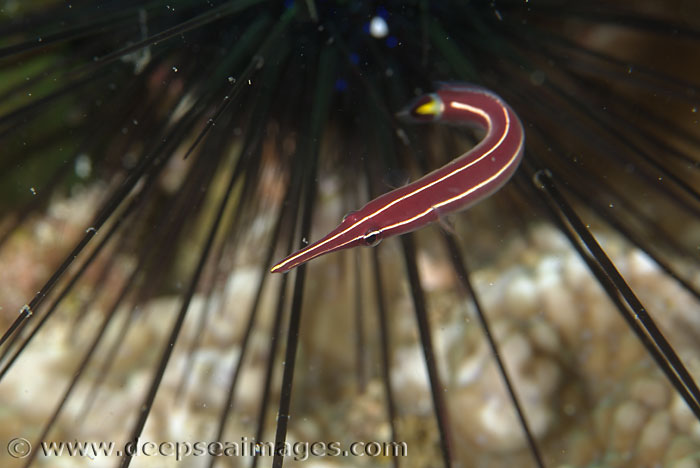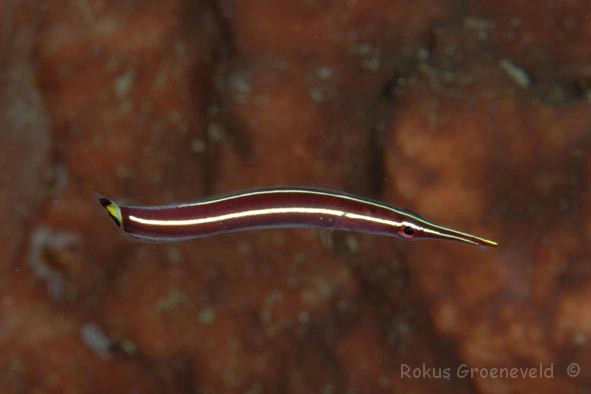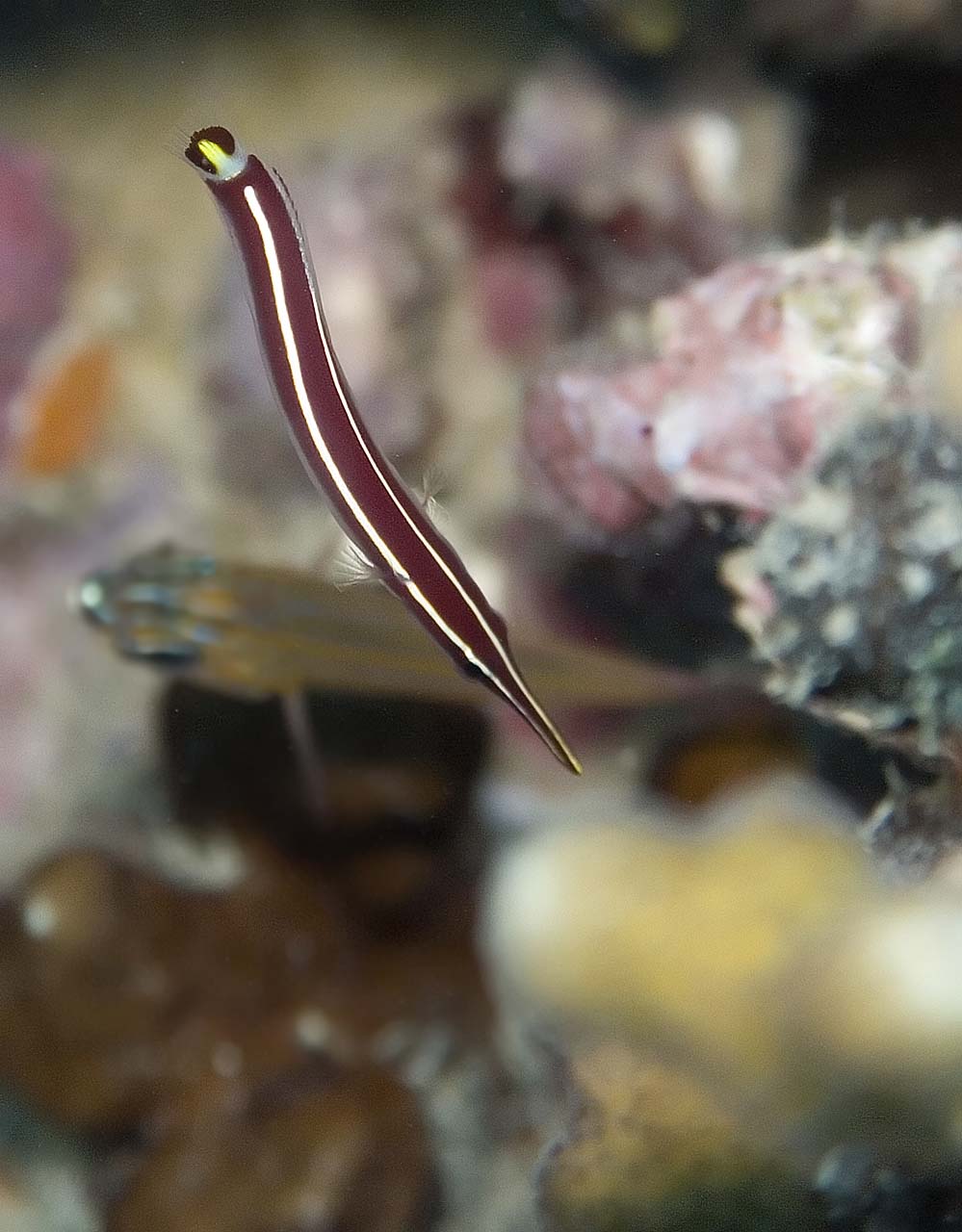
Diademichthys lineatus
FAMILY
Gobiesocidae
TAXONOMY
Diademichthys lineatus Sauvage, 1883, New Caledonia.
OTHER COMMON NAMES
None known.
PHYSICAL CHARACTERISTICS
Elongate and slender body, with spatulate snout and small fins.
There are 13–15 dorsal fin soft rays, 12–14 anal fin soft rays,
and 25–26 pectoral fin soft rays. Color is reddish or reddish
brown, with paired yellow stripes and a yellow blotch on the
caudal peduncle that extends to the caudal fin. Grows to 1.9 in
(5 cm) in length.
DISTRIBUTION
From Oman and Mauritius in the western Indian Ocean east
to Indonesia and Fiji, north to southern Japan, and south to
northern Australia.
HABITAT
Inhabits shallow coral reefs among the long-spined sea urchins
and branching corals, usually in holes or protected areas.
BEHAVIOR
This clingfish swims, often in a dancing or undulating motion,
between the spines of sea urchins, within coral heads, and in
holes or small caves where sea urchins might be found. Their
BEHAVIOR
is not known in any great detail and remains to be
studied.
FEEDING ECOLOGY AND DIET
Takes burrowing bivalves on corals, eggs of shrimp commensal
with sea urchins, and the tube feet of sea urchin hosts. Juveniles
feed on the pedicellariae and sphaeridia of host urchins
and on copepods and the eggs of shrimp that are commensal
with sea urchins.
REPRODUCTIVE BIOLOGY
This species probably courts and spawns in a manner similar to
that of others in its
FAMILY
, except that courtship bouts most
likely take place in the water column. The eggs are small and
demersal, and the larvae are pelagic.
CONSERVATION STATUS
Not listed by the IUCN. May be at risk from the loss of sea
urchins because of overfishing, disease, or other factors and
from habitats destruction and the effects of pollution on reefs.
SIGNIFICANCE TO HUMANS
May be collected for the aquarium trade.
Other popular Animals
Photo Gallery of - Urchin clingfish





 Animalia Life
Animalia Life